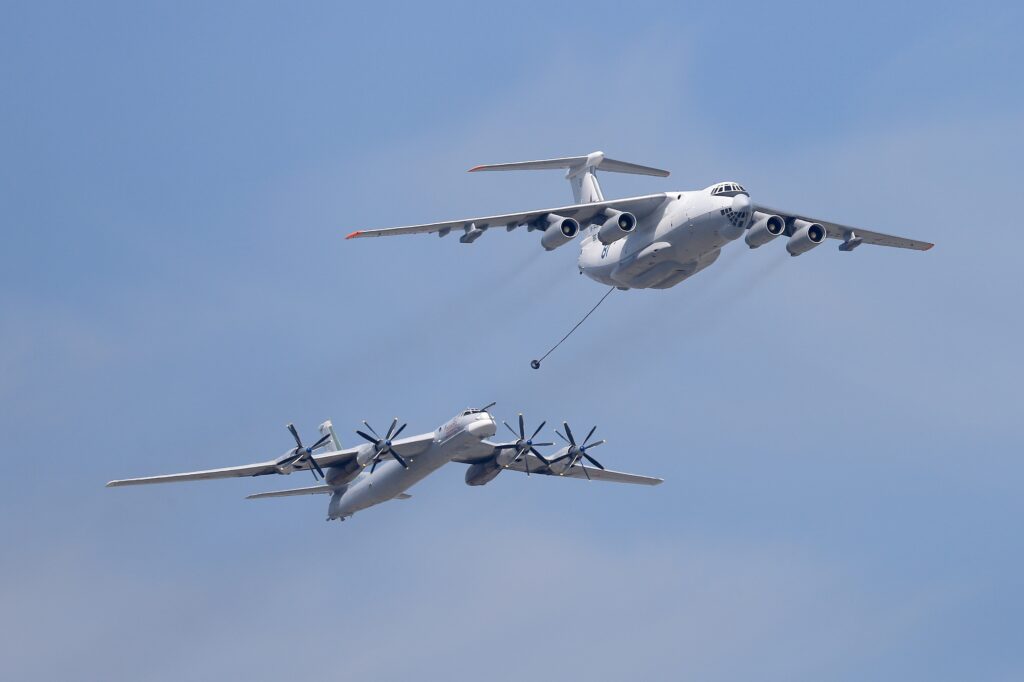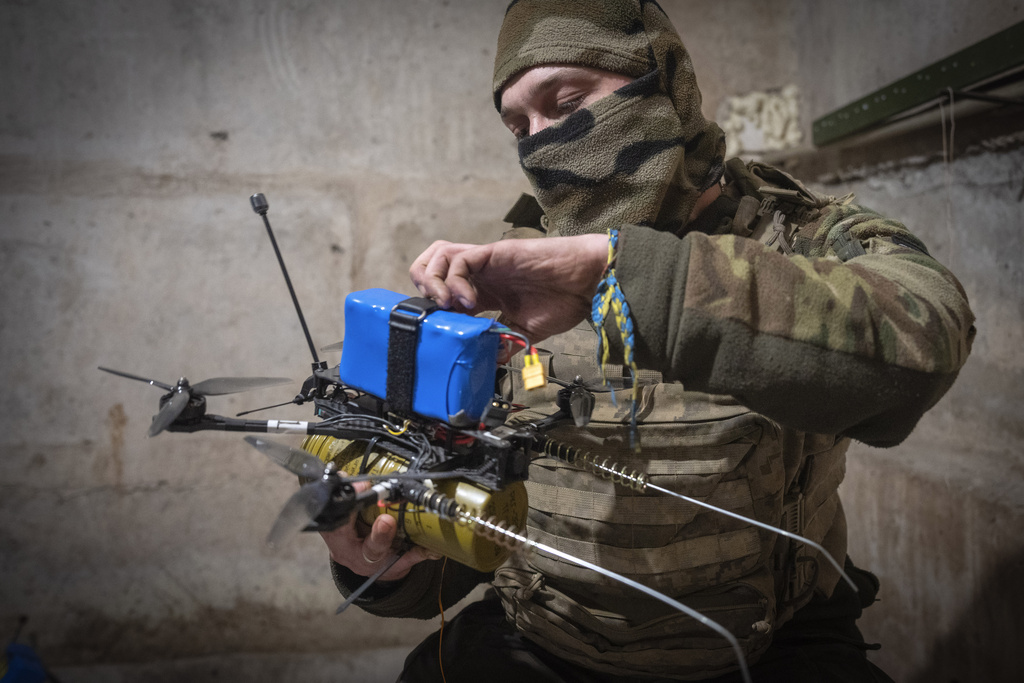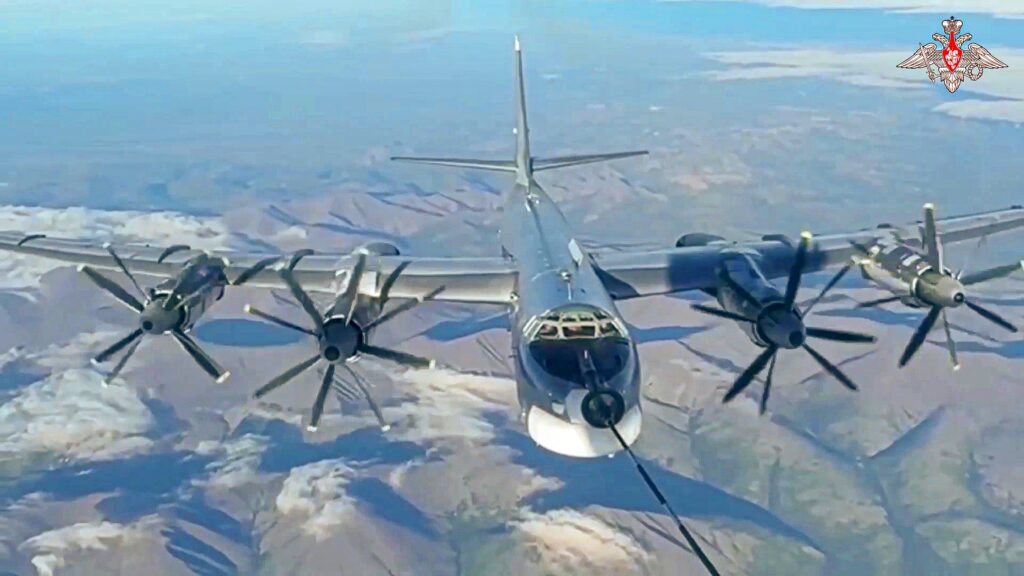Ukrainian Drones Go Where American Missiles Never Ventured
Trump-Brokered ceasefire proves nebulous as the Ukraine-Russia air war rages.

For decades, the Pentagon war-gamed American inter-continental ballistic missile strikes on Soviet nuclear bases. Yesterday, Ukraine successfully attacked one, sending a huge orange cloud rising over Engels-2, on the Volga River. To duck Russian air defenses, Kyiv’s strategy was to use $50,000 drones modified from Ukraine’s equivalents of single-engine Piper Cubs.
Bearing the name of communist philosopher Friedrich Engels, the air base is the sole operations center for Russia’s most expensive strategic bomber, the sweep-winged Tupolev Tu-160, known in the West by its NATO codename, Blackjack. Explosions blew debris over a three-mile radius. Parked along the two-mile-long concrete runway were Tu-95 and Tu-160 bombers.
Russia uses these nuclear-capable aircraft to launch cruise missile attacks against Ukrainian cities. Ukraine reportedly acted on intelligence that indicated a new load of Kh-101 and Kh-55 cruise missiles had recently been stored at an ammunition depot adjacent to the runway.

“At Engels, the Russians lost missiles, including the Kh-101, as a result of the strike,” a Ukrainian defense official, Andriy Kovalenko, wrote yesterday on Telegram. “This airfield stores the largest number of missiles used by strategic aviation for strikes on Ukraine.”
The attacks come after President Putin refused to join a 30-day general ceasefire deal brokered by President Trump and accepted by President Zelensky. Mr. Putin agreed only to a suspension of attacks on “energy” targets. Over the previous seven weeks, Ukraine successfully attacked energy targets in nine regions of Western Russia — refineries, depots, and pipeline pumping stations.
“This is the one area where a cease-fire would benefit Russia more than Ukraine, given Kyiv’s expanding capacity for long-range drone attacks on Russian energy targets,” a former American ambassador to NATO and Russia, Alexander Vershbow, tells the Atlantic Council.
The year 2025 is shaping up as the year of the drone. Ukraine has set a goal of tripling drone production, to 4 million this year. Many are new-generation, long-range drones capable of flying 600 miles into Russia and hitting any target west of the Ural Mountains.

“This is bad news for Putin, who is heavily dependent on the Russian oil and gas sector to fund and supply his war machine,” a Henry Jackson Society research fellow, David Kirichenko, wrote yesterday. “With Russia’s air defenses already stretched thin in order to cover the front lines of the invasion in Ukraine, Putin now finds himself unable to adequately protect his energy industry from aerial assault.”
Next Monday, American negotiators are to meet in Saudi Arabia — separately — with Russian and Ukrainian teams. The goal is to lock down the details and timing of the limited ceasefire. President Zelensky said Wednesday: “Until we agree [with Russia], until there is a corresponding document on even a partial ceasefire, I think that everything will fly.”
Yesterday at daybreak, a series of explosions woke the 900,000 residents of Saratov, a Russian city 435 miles east of Ukraine. Saratov’s regional governor, Roman Busargin, announced on Telegram: “Today, Saratov and Engels suffered the largest attack by drones to date.” It was the third attack on Engels-2 in 10 weeks — and by far the most spectacular.
Defense officials say they were forced to combat 54 incoming drones. The governor declared a state of emergency, saying 30 houses were damaged and 10 persons were injured. In coming days, satellite photos could indicate how many bombers were damaged.

Last night, in a counter punch, Russia sent a swarm of drones to Odesa, Ukraine’s third-largest city. At least 18 got through, knocking out power for almost half of the city’s 1 million residents.
Next it was Ukraine’s turn, setting off a spectacular fireball of an explosion last night at a natural gas pipeline pumping station in Suzhda, Russia. After a 7-month occupation, Ukrainian troops retreated last week from this Russian border city. The Ukrainians either sent drones over the border or mined the pumping station, with timed or remote-controlled charges.
This gas blaze came as firefighters in southern Russia still battled a big oil export depot fire caused by Ukrainian drones in Kavkazskaya. With fire videos all over the Internet, these two attacks sent Russian Foreign Ministry spokeswoman Maria Zakharova into a rage.
“We believe that the Kyiv regime has already broken the ceasefire proposed by the U.S. president,” she said on Russia’s state-owned Channel 1. “How is Washington going to handle this terrorist scum gone mad? How are they going to put them in their place and get them on to something like the right track?”
The Ukrainian side offered no apologies. The General Staff statement on Engels-2: “This military facility is used by Russian aviation to launch missile strikes on the territory of Ukraine and terrorist attacks against the civilian population.”

